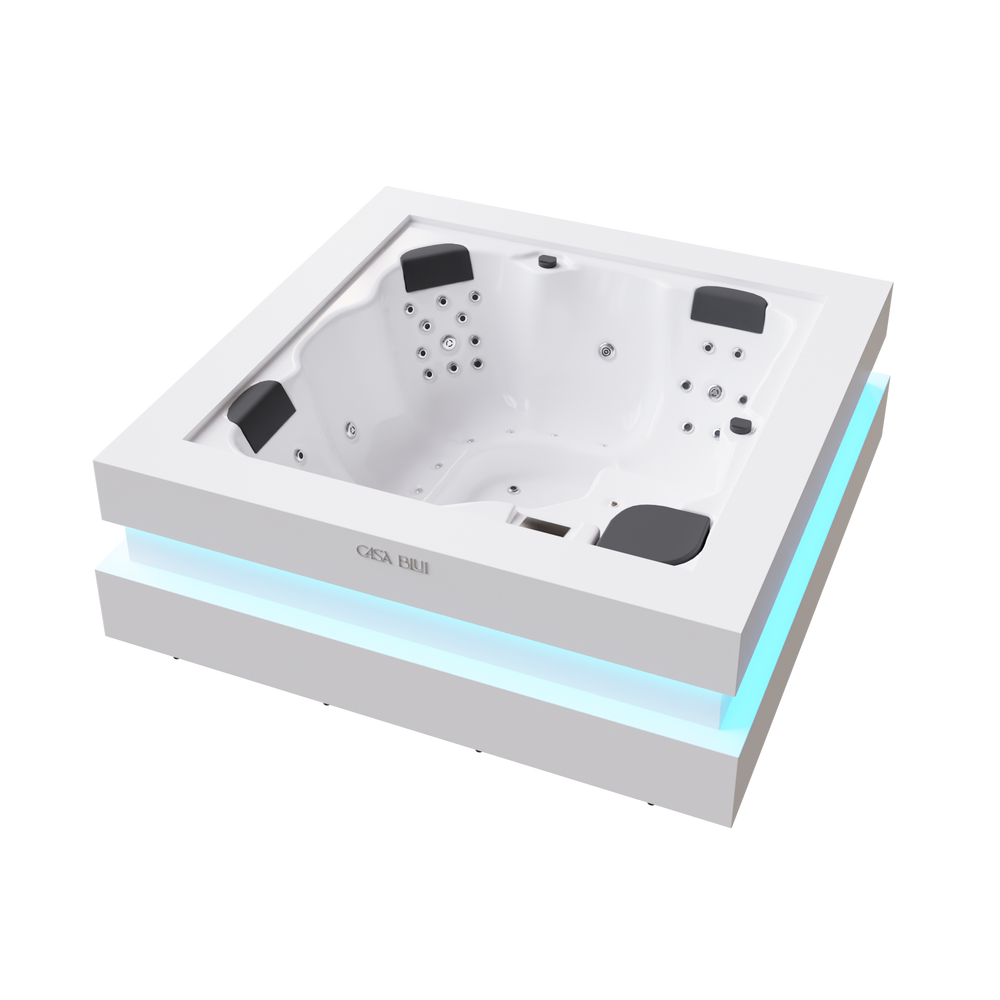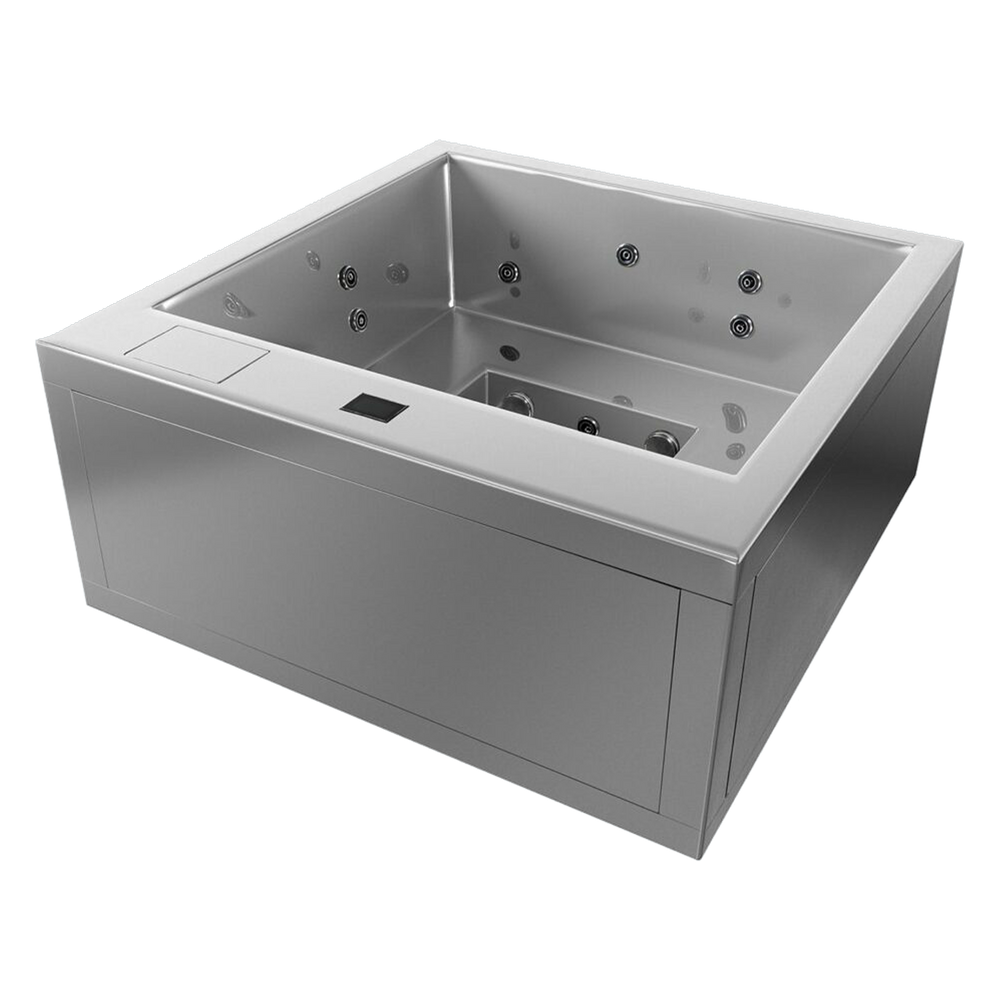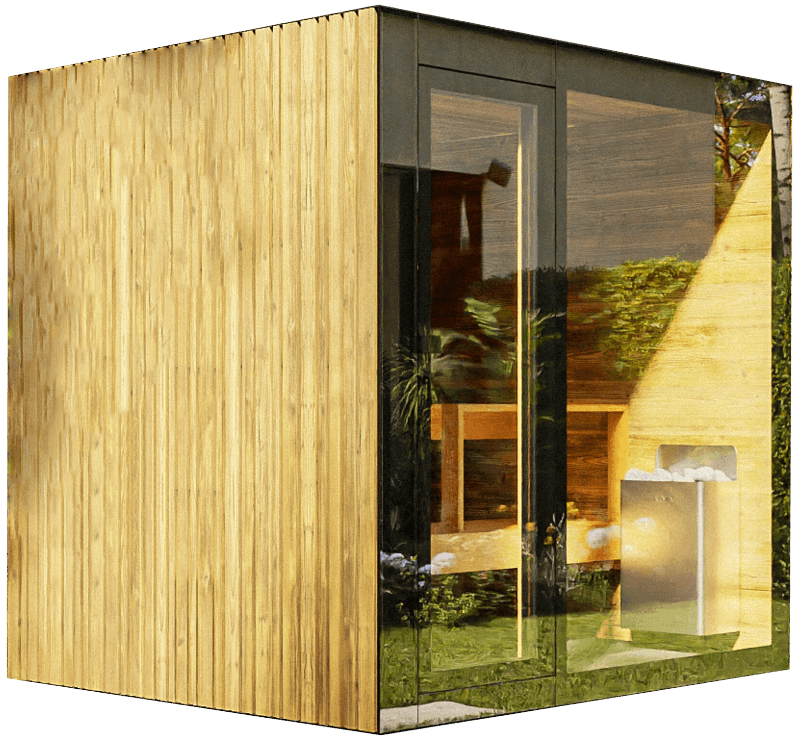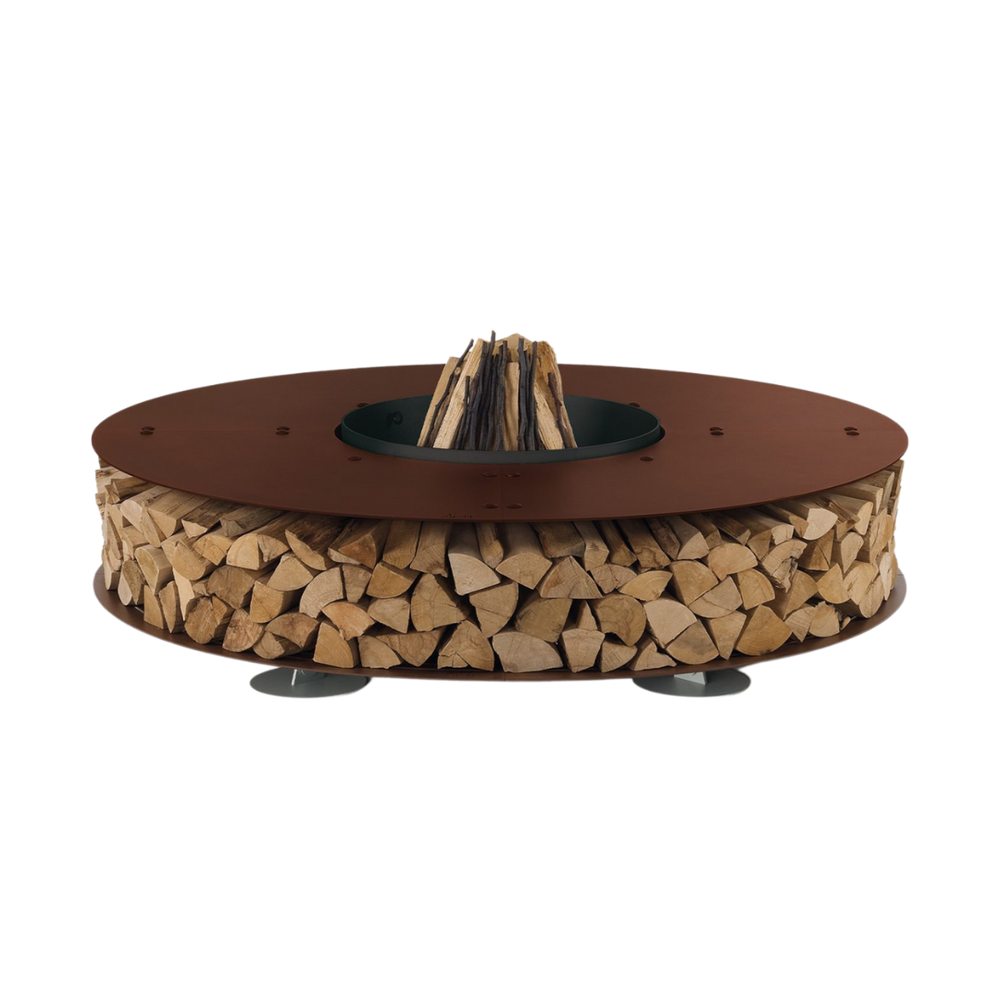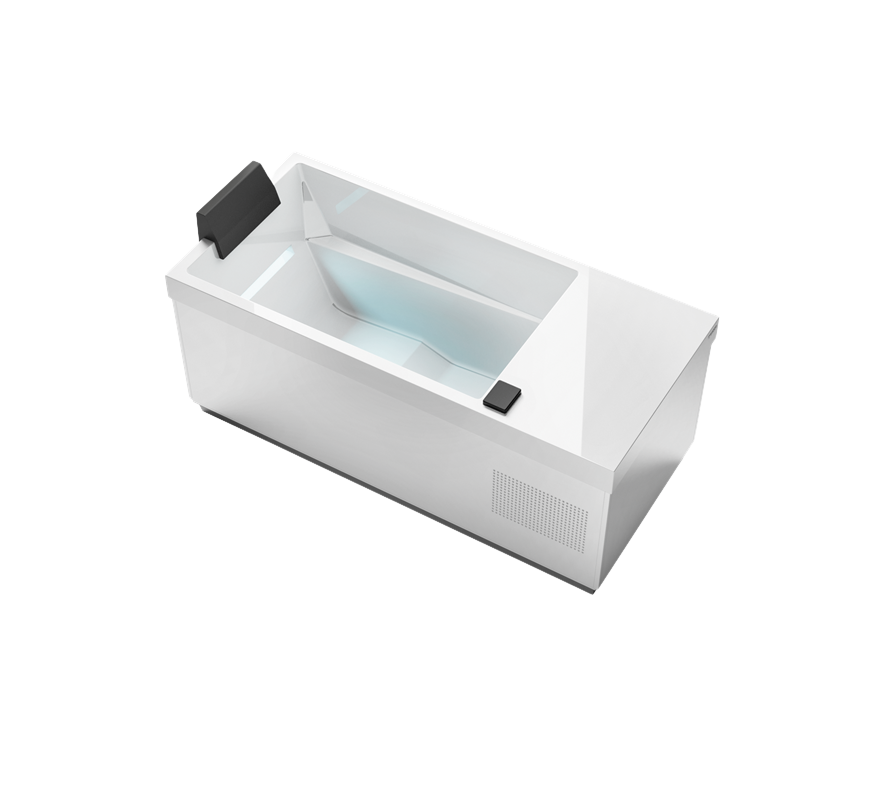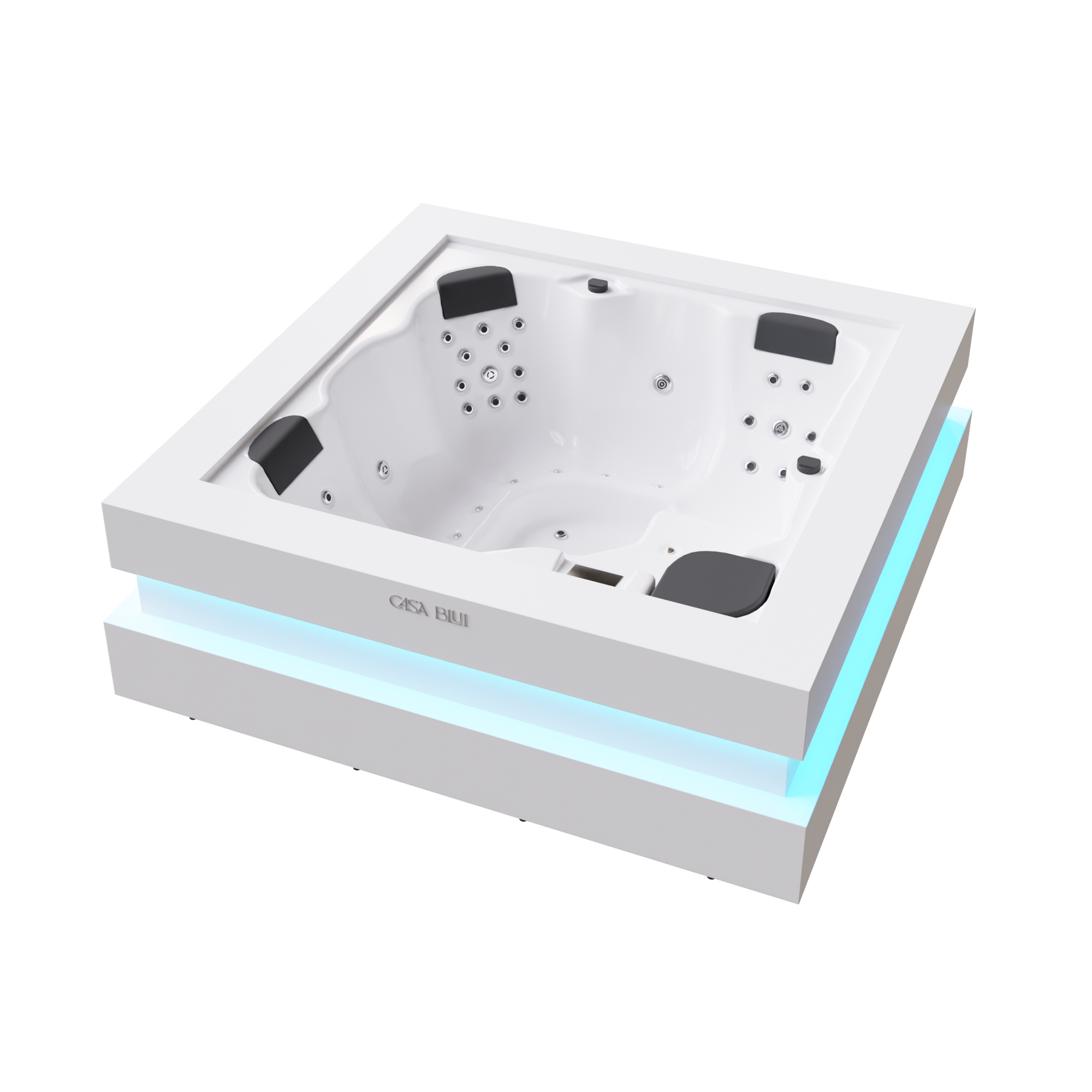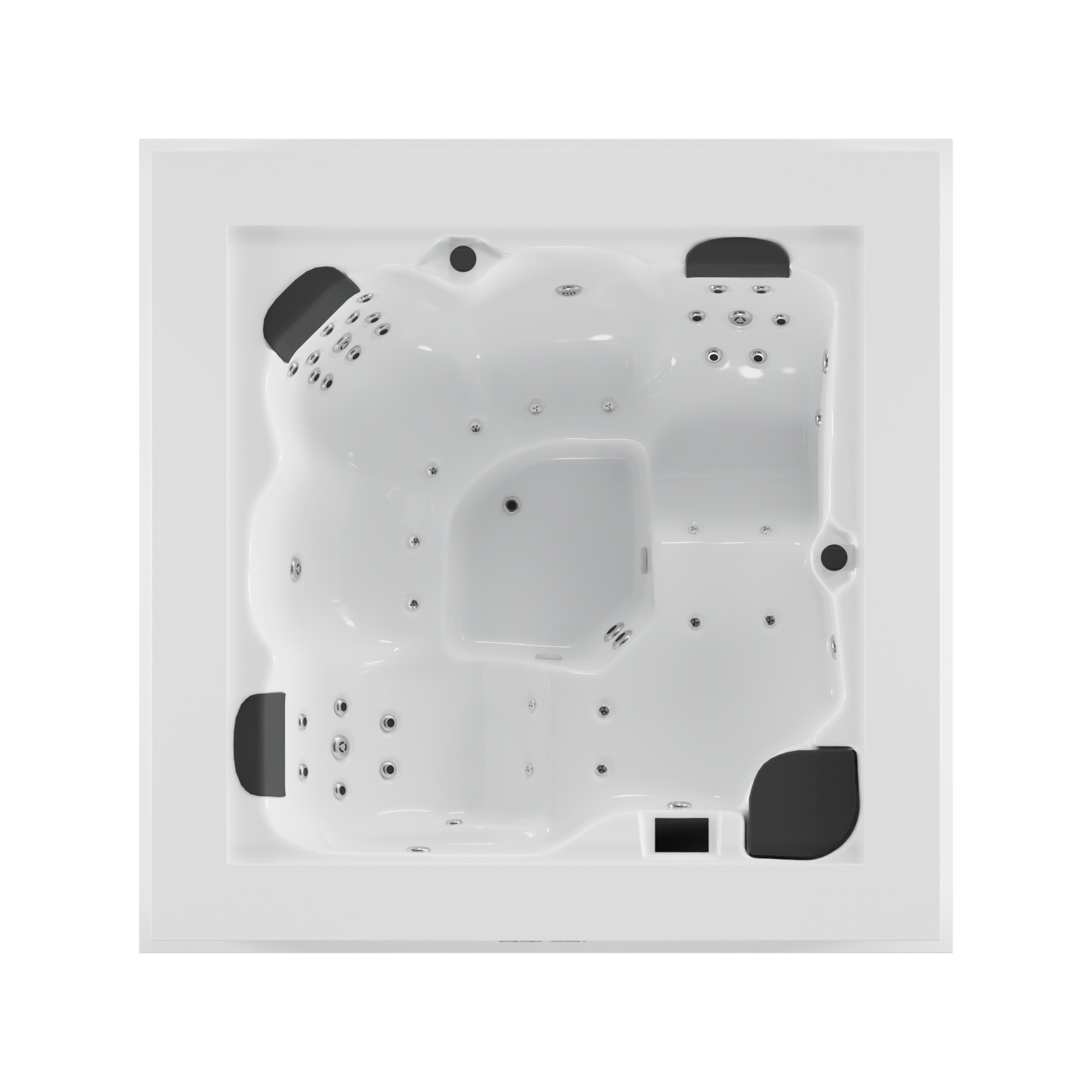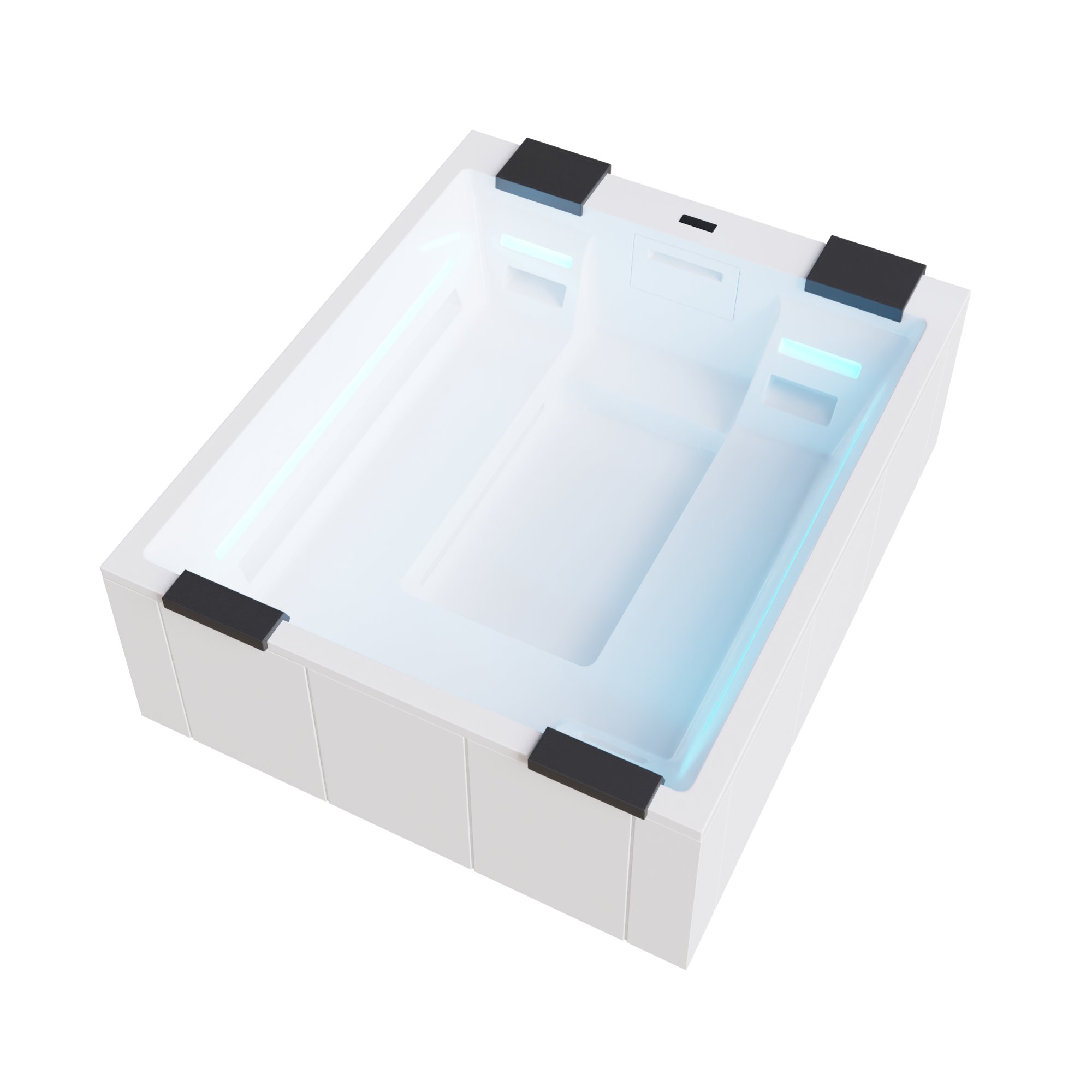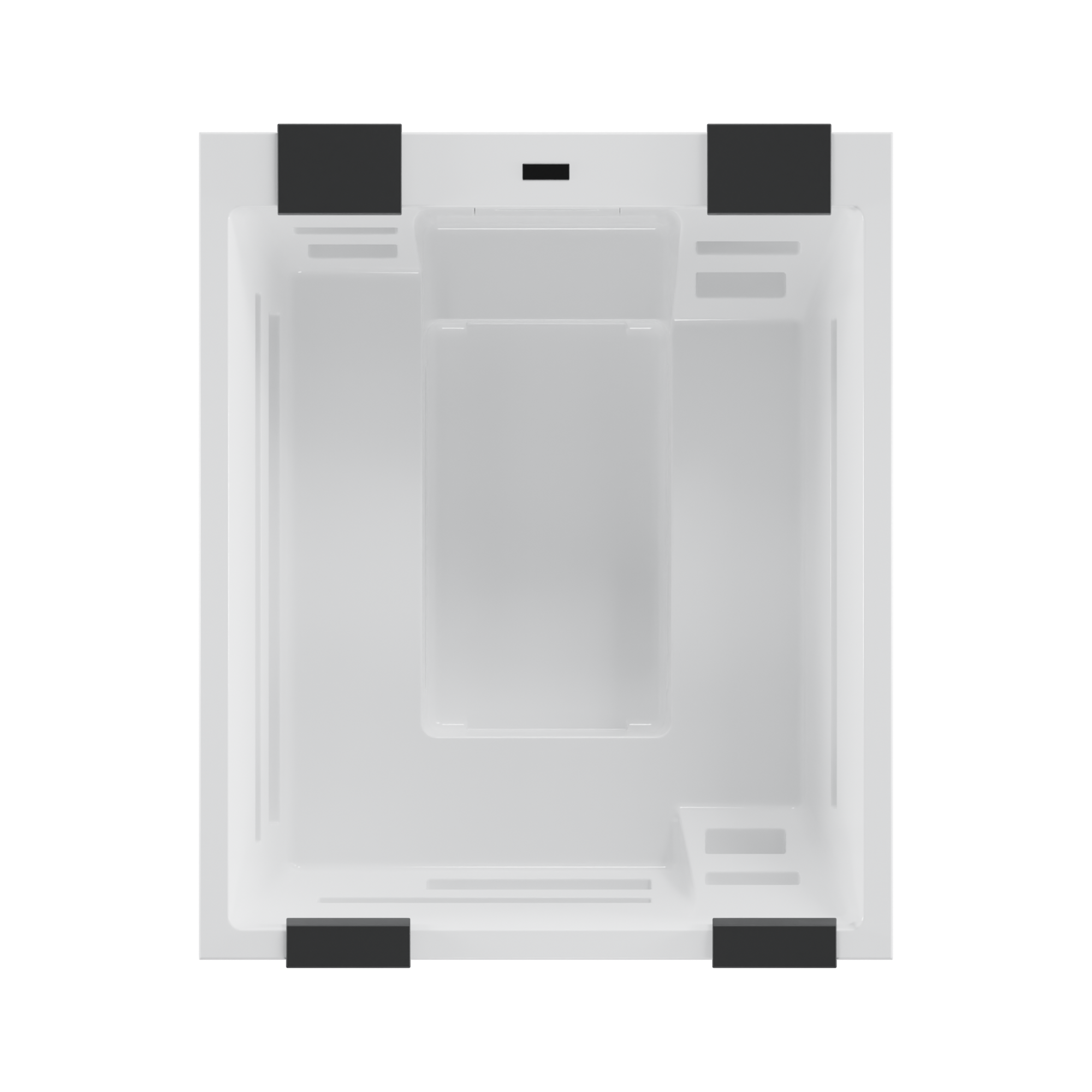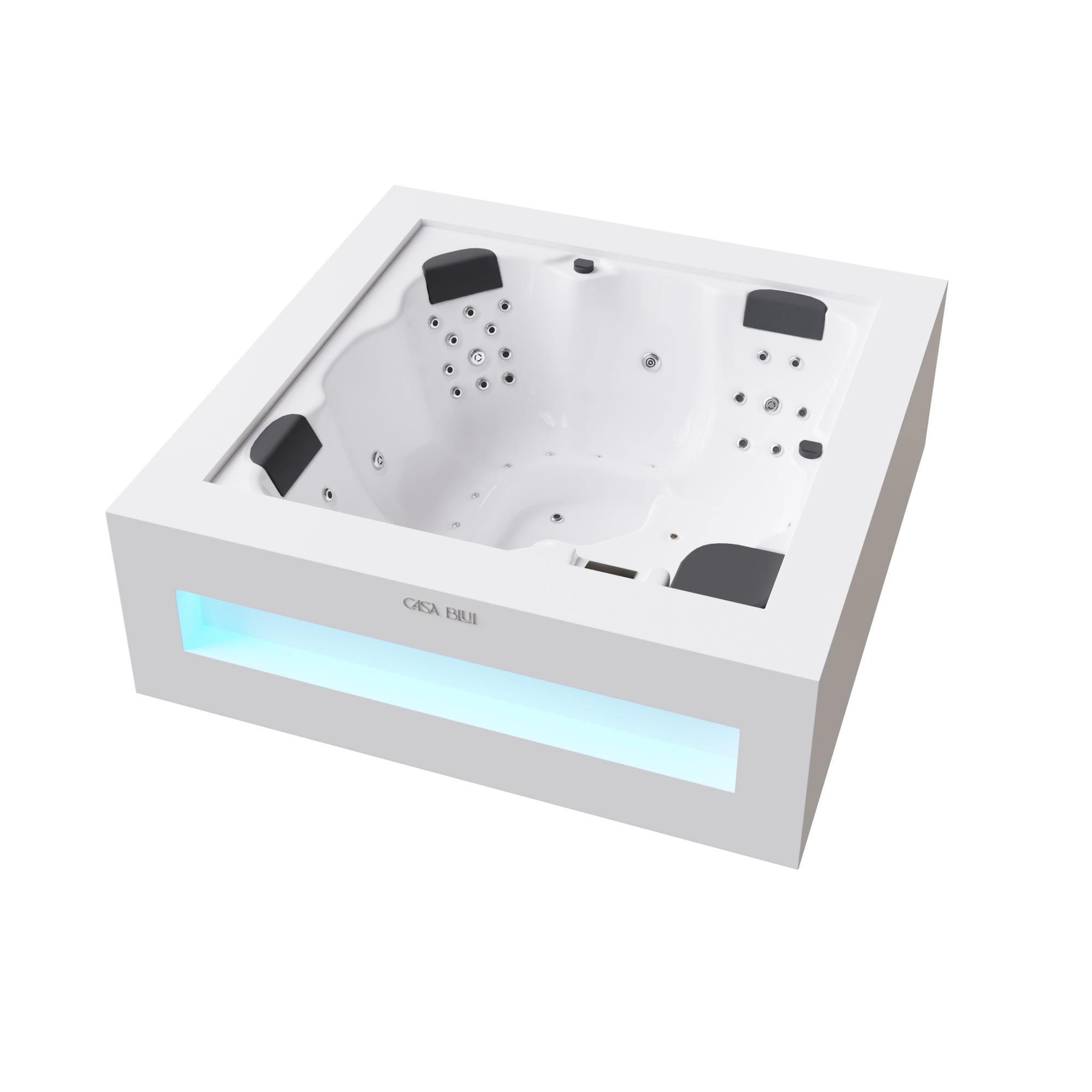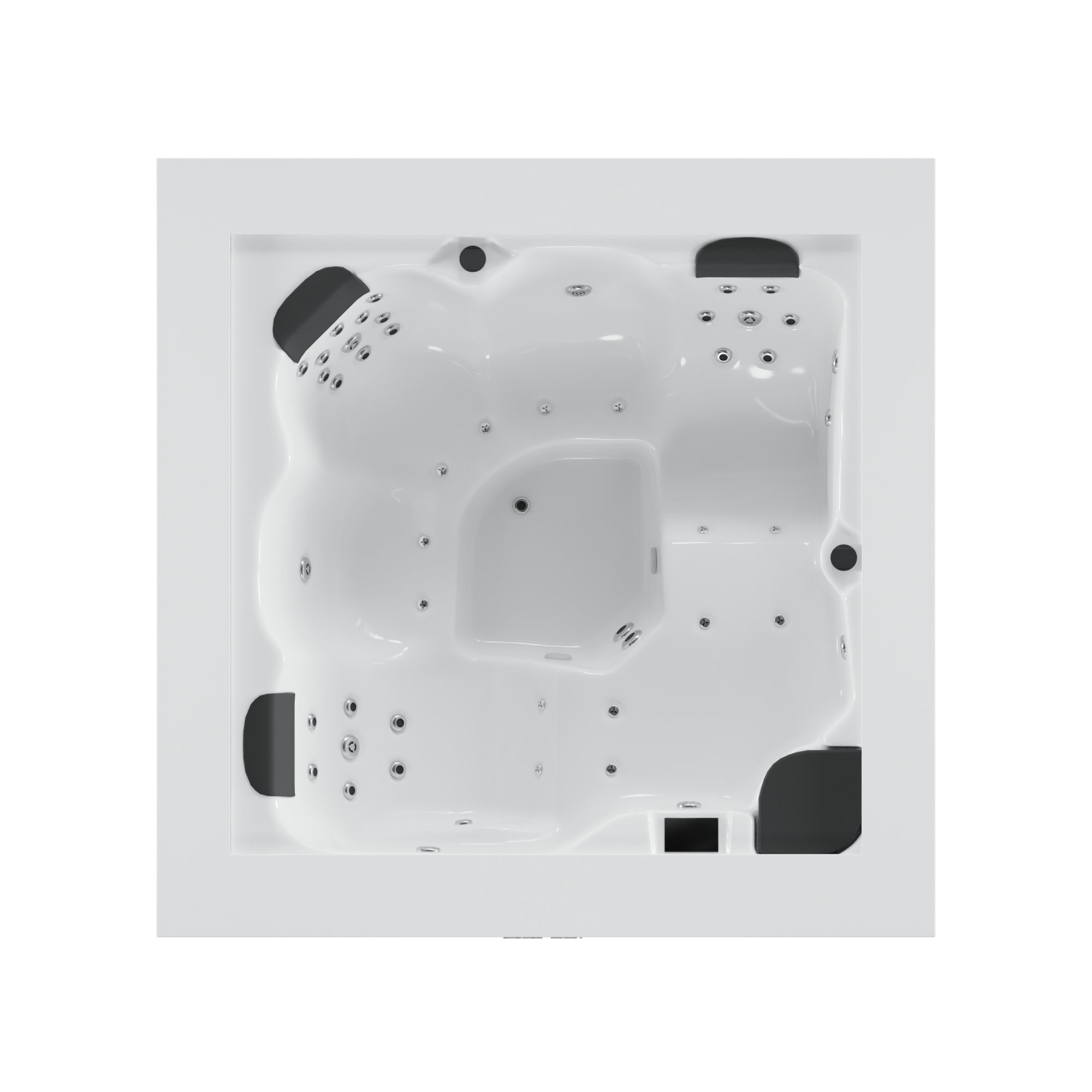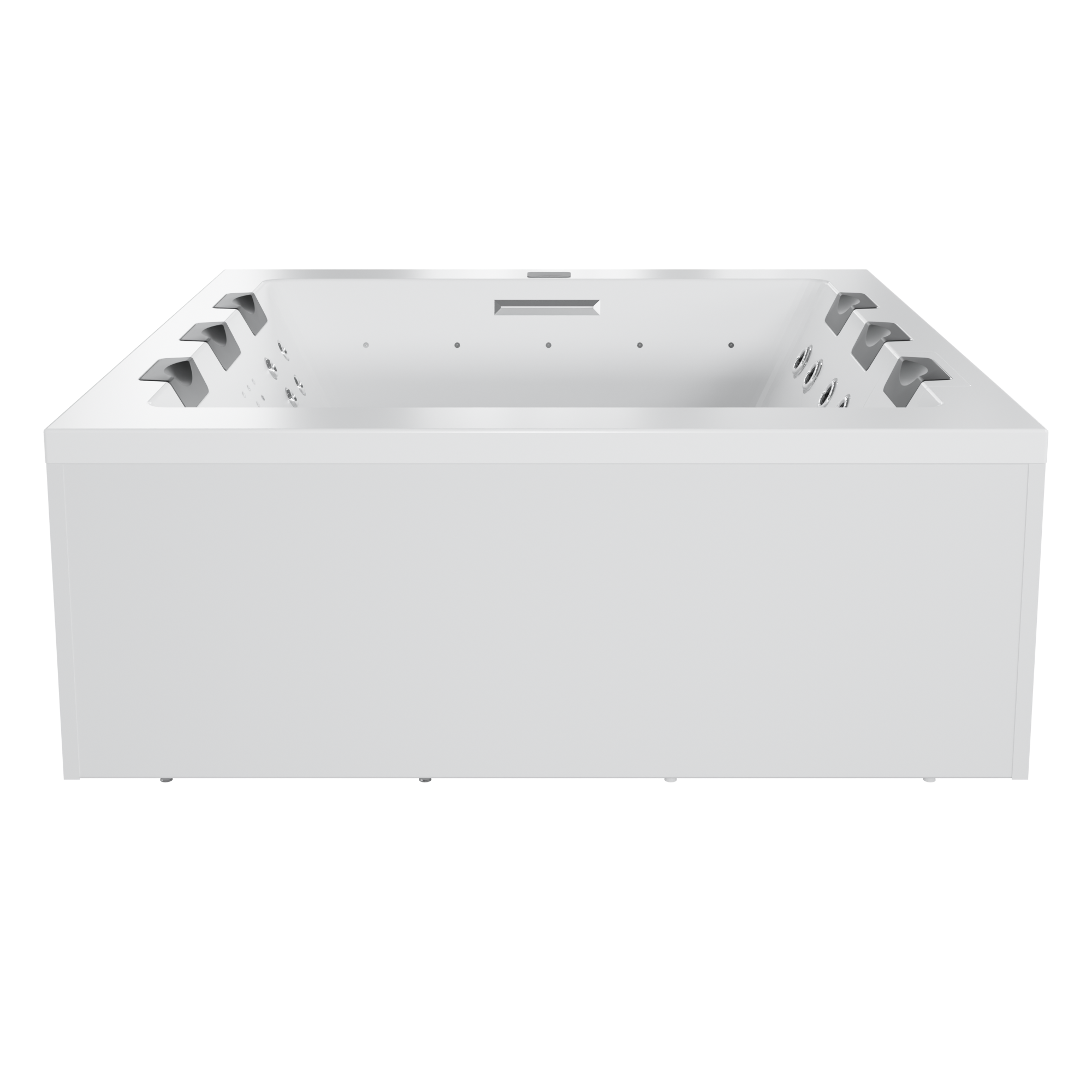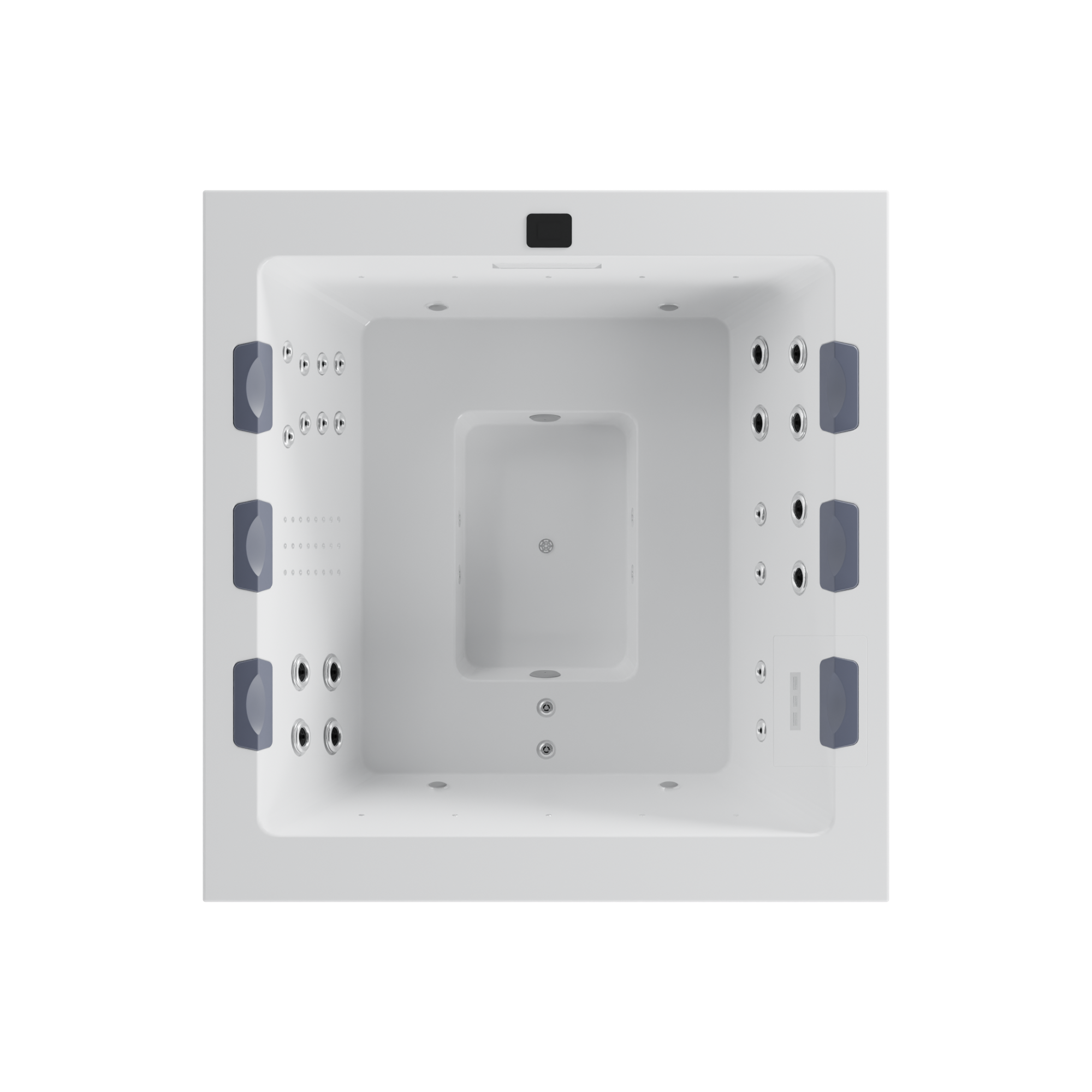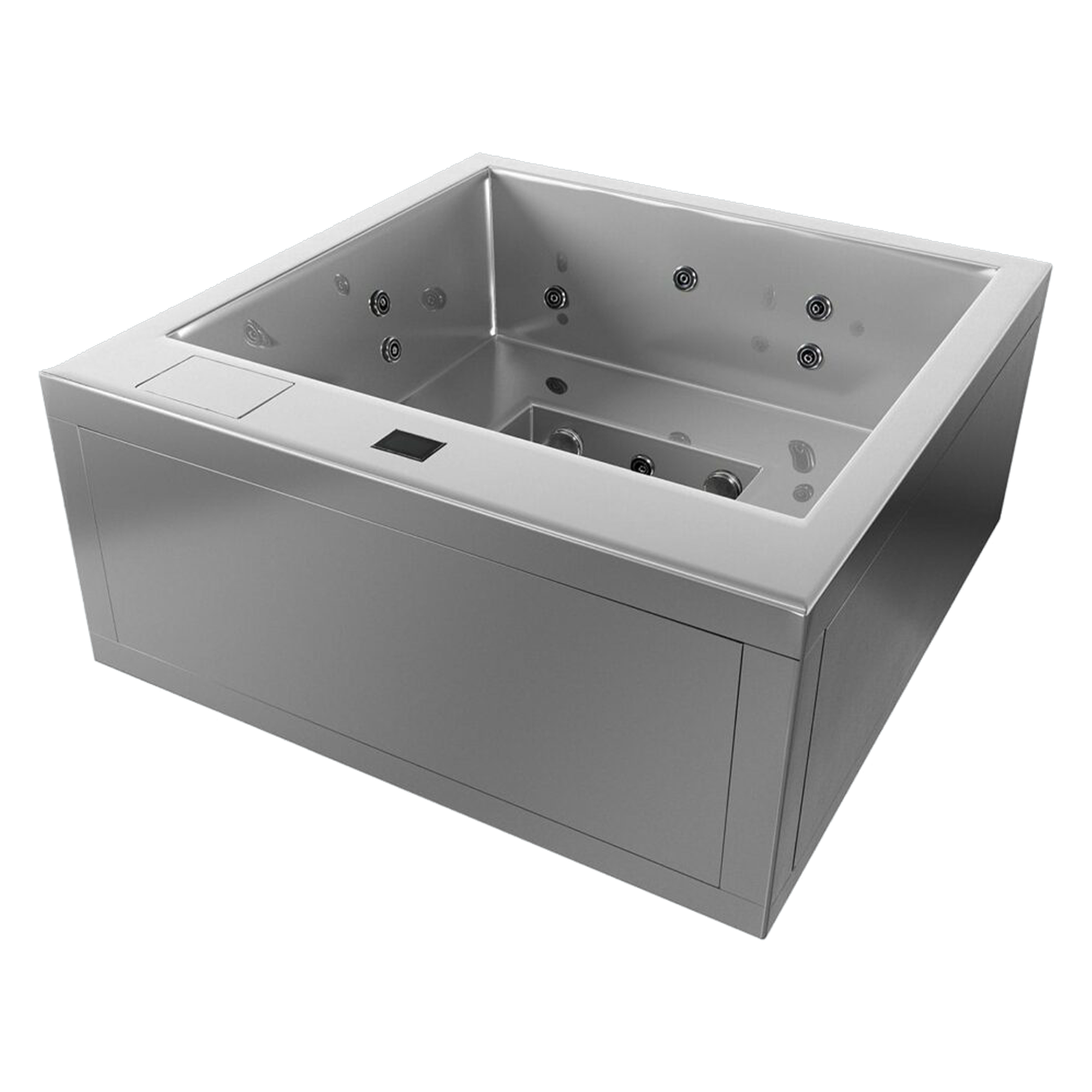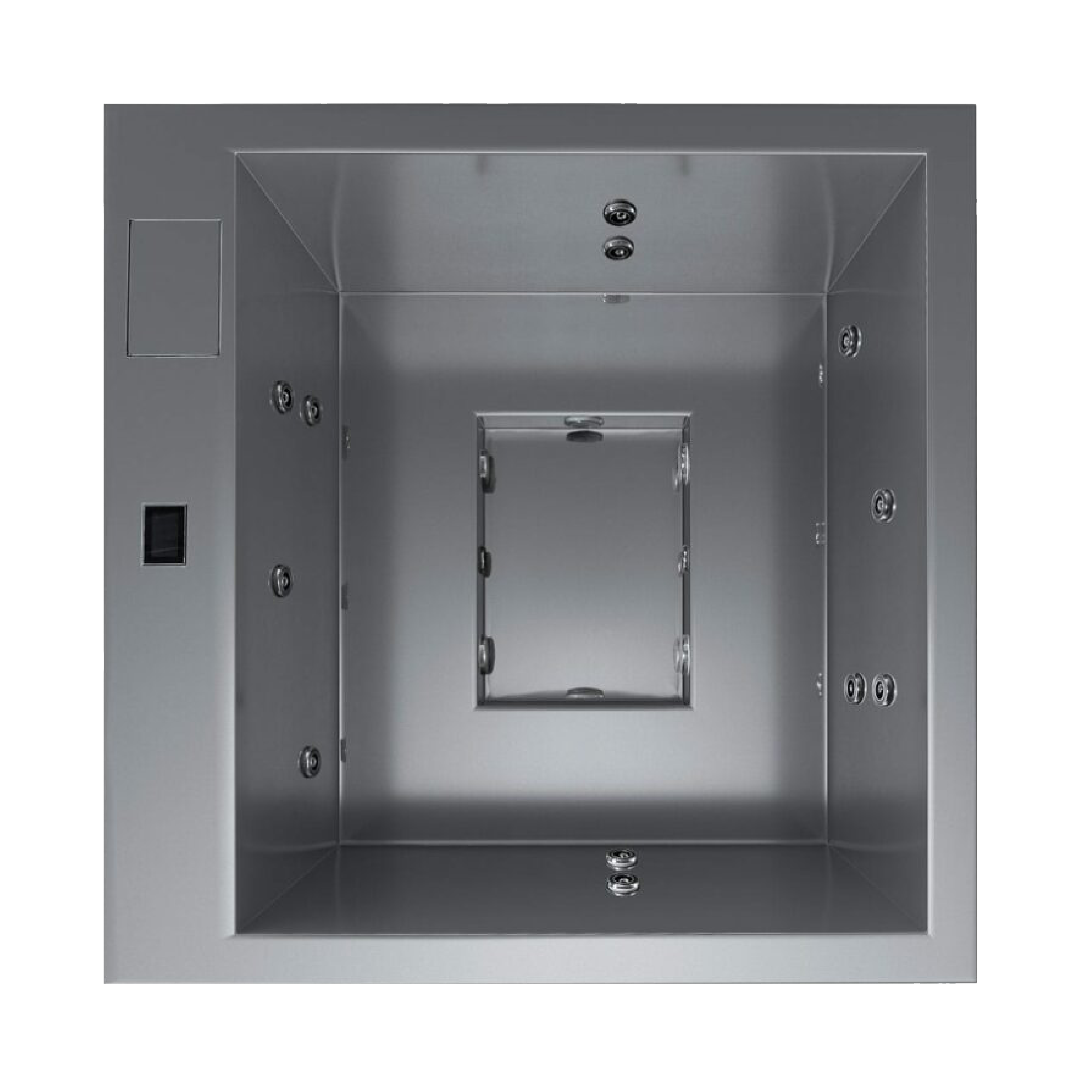Casa Blui Blog
Fire Pit Legal Guide
By andrei newman
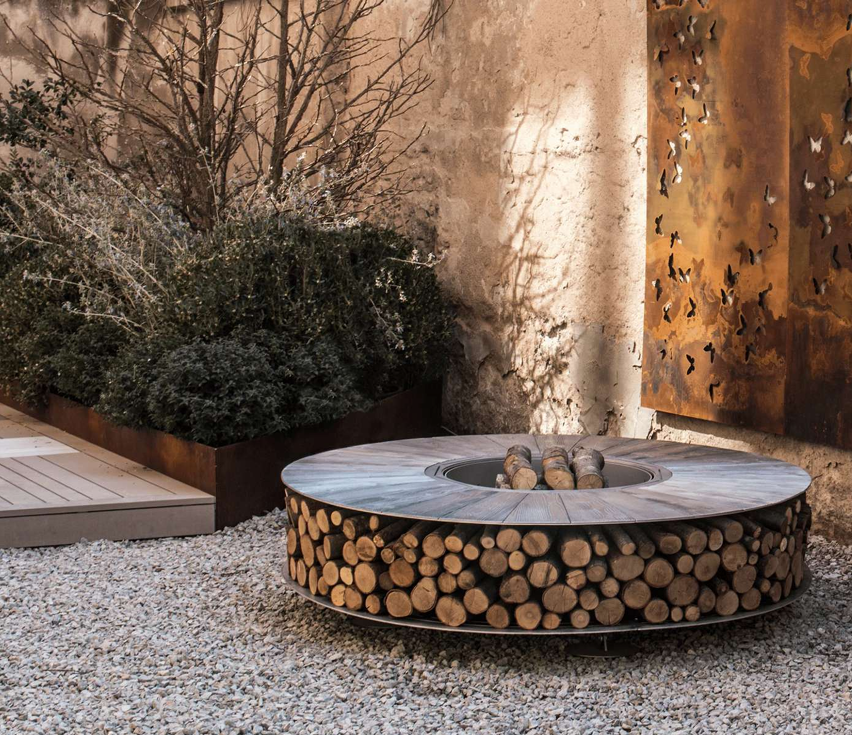
Safety is crucial when installing a fire pit in your home. As experts in manufacturing luxury fire pits, we've compiled this fire pit legal guide to help you navigate safety regulations with ease.
You'll learn about proper materials, safe distances from structures, non-combustible bases, and why checking with your HOA and insurance provider matters. Let's dive into everything you need to know to keep your fire pit stunning, safe, and compliant.
Fire Pit Legal Guide
Staying within legal boundaries when installing or designing your fire pit is crucial for safety, property protection, and maintaining harmony in your community. Here are the key regulations to know to keep your fire pit safe, legal, and hassle-free:
-
Fire pit zoning laws
-
Residential fire pit regulations
-
Fire pit permit requirements
-
Local burn bans
-
Environmental regulations
If you plan to pair your luxury fire pit with other amenities, such as a luxury hot tub, a luxury home sauna, or even an ice bath spa, ensure each installation follows local regulations to enjoy a seamless, relaxing, and safe outdoor spa experience.
Common Fire Pit Laws & Regulations
If you want to transform your backyard into an outdoor wellness retreat with a fire pit, let's explore the laws that ensure your setup is safe and legal. Here are some standard regulations that you need to keep in mind.
Fire Pit Placement & Zoning Laws
Most local laws require your fire pit to be 10-25 feet from structures, trees, fences, and power lines to prevent fire hazards. Placing your fire pit too close to your home, wooden fences, or low-hanging branches can cause heat damage, accidental fires, or smoke issues.
Measure the distance before installation and mark the area with stones or pavers to clearly define the boundary. Always check with your local fire department or zoning office for exact placement rules.
If you are unsure what type of fire pit to buy, our fire pit buying guide can help.
Burn Bans and Restrictions
Burn bans are common during dry seasons when wildfire risk is high. Some areas allow gas fire pits during bans but restrict wood-burning ones due to embers and sparks. Restrictions vary by location, so check with your local fire department or sign up for community alerts to stay informed. Ignoring a burn ban can result in hefty fines and legal responsibility if your fire causes damage, so always verify before lighting your fire pit.
Approved Materials for Burning
Many areas regulate what you can burn due to safety and environmental concerns. Stick to seasoned hardwoods like oak, hickory, or maple, which burn cleaner and produce less smoke.
Burning materials like garbage, pressure-treated wood, or construction scraps are often illegal and harmful, releasing toxic fumes into the air. Avoid softwoods like pine or cedar, which create more smoke and creosote buildup. Use clean, dry wood or eco-friendly fire pit logs for a safer burn.
Supervision And Safety Measures
Never leave a fire pit unattended, even when the flames seem low. Local regulations often require an adult to be present while the fire is burning, and the fire must be fully extinguished before leaving the area. Keep a hose, bucket of sand, or fire extinguisher nearby in emergencies.
Many states also recommend or require a spark guard to prevent embers from escaping. To avoid disturbing neighbors or violating noise ordinances, avoid smoke drift and noise, especially during late-night gatherings.
Local State Laws for Installing Fire Pits
A fire pit is a common luxury feature in the homes of the rich and famous. But before installing your luxury fire pit, it's essential to understand that fire pit regulations vary depending on your location.
The table below provides information on where to find your state's specific fire pit laws and regulations.
|
State |
Department and Address |
Phone Number |
Website |
|
Alabama |
Department of Environmental Conservation |
(334) 240-9300 |
https://forestry.alabama.gov/Pages/Informational/Search_Results.aspx?q=open%20burning |
|
Alaska |
Department of Environmental Quality P. O. Box #111800, 410 Willoughby Avenue, Juneau, AK 99811 |
(907) 269-8463 |
https://dec.alaska.gov/air/air-permit/open-burn-info/ |
|
Arizona |
Office of Energy & Environment 1110 West Washington Street, Phoenix, AZ 85007 |
(602) 771-2300 |
https://azdeq.gov/node/310 |
|
Arkansas |
Office of Energy & Environment 5301 Northshore Drive, Little Rock, AR 72118-5317 |
(501) 682-0744 |
https://www.adeq.state.ar.us/home/contactus.aspx |
|
California |
Air Resources Board 1001 I Street, P. O. Box #2815, Sacramento, CA 95812 |
(800) 242-4450 |
https://ww2.arb.ca.gov/search/site?keys=open%20burning |
|
Colorado |
Department of Public Health and Environment 4300 Cherry Creek Drive, South, Denver, CO 80246 |
(303) 692-3100 |
https://cdphe.colorado.gov/outdoor-burning |
|
Connecticut |
Department of Energy & Environmental Protection 79 Elm Street, Hartford, CT 06106-5127 |
(860) 424-4152 |
https://portal.ct.gov/DEEP/Air/Open-Burning/Open-Burning |
|
Delaware |
Department of Natural Resources & Environmental Control 100 West Water Street, Suite 6A, Dover, DE 19904 |
(302) 739-9402 |
https://dnrec.alpha.delaware.gov/air/open-burning/residential/ |
|
Florida |
Florida Department of Environmental Protection 3900 Commonwealth Boulevard, Tallahassee, FL 32399-3000 |
(850) 245-2118 |
https://floridadep.gov/air/permitting-compliance/content/open-burning |
|
Georgia |
Environmental Protection Division 2 Martin Luther King Jr. Drive, SE Suite 1456, East Tower Atlanta, GA 30334 |
(404) 362-2537 |
https://epd.georgia.gov/air-protection-branch/open-burning-rules-georgia |
|
Hawaii |
Department of Health Kinau Hale 1250 Punchbowl Street Honolulu, Hawaii 96813 |
808-586-4400 |
https://health.hawaii.gov/cab/open-burning-and-agricultural-burning-permits-in-hawaii/ |
|
Idaho |
Department of Environmental Quality 1410 North Hilton Street, Boise, ID 83706 |
(208) 373-0502 |
https://www.deq.idaho.gov/air-quality/smoke-and-burning/can-i-burn/ |
|
Illinois |
Environmental Protection Agency 1021 North Grand Avenue, East P.O. Box #19276 Springfield, IL 62794-9276 |
(217) 782-3397 |
https://epa.illinois.gov/topics/air-quality/open-burning.html |
|
Indiana |
Department of Environmental Management Indiana Government Center North, 100 North Senate Avenue Indianapolis, IN 46204-2251 |
(317) 232-8603 |
https://www.in.gov/idem/ |
|
Iowa |
Department of Natural Resources Wallace State Office Building 502 East 9th Street, 4th Floor Des Moines, IA 50319-0034 |
(515) 725-8200 |
https://www.iowadnr.gov/Environmental-Protection/Air-Quality/Open-Burning |
|
Kansas |
Kansas Department of Health & Environment 1000 SW Jackson, Suite #400 Topeka, KS 66612 |
(785) 296-1551 |
https://www.kdhe.ks.gov/Search?searchPhrase=open%20burning |
|
Kentucky |
Department of Environmental Protection 300 Sower Blvd Frankfort, KY 40601 |
(502) 564-6120 |
https://eec.ky.gov/Environmental-Protection/Air/Pages/Open-Burning.aspx |
|
Louisiana |
Department of Environmental Quality 602 North Fifth Street Baton Rouge, LA 70802 |
(225) 219-5337 |
https://www.deq.louisiana.gov/search?q=OPEN+BURNING |
|
Maine |
Department of Environmental Protection 17 State House Station Augusta, ME 04333 |
(207) 287-7688 |
https://apps1.web.maine.gov/burnpermit/public/burn_rules.html?button=Get+Started+Now+%C2%BB |
|
Maryland |
Department of Natural Resources 580 Taylor Avenue Annapolis, MD 21401 |
(877) 620-8367 |
https://dnr.maryland.gov/forests/pages/fire/firenotes.aspx |
|
Massachusetts |
Department of Environmental Protection 1 State Road Stow, MA 01775 |
(978) 567-3375 |
https://www.mass.gov/service-details/open-burning-safety |
|
Michigan |
Department of Environment, Great Lakes & Energy Constitution Hall 525 West Allegan Street P.O. Box #30473 Lansing, MI 48909-7973 |
(517) 284-6700 |
https://www.michigan.gov/egle/about/organization/air-quality/open-burning |
|
Minnesota |
Department of Natural Resources 500 Lafayette Road Saint Paul, MN 55155 |
(651) 296-6157 |
https://www.dnr.state.mn.us/forestry/fire/questions.html |
|
Mississippi |
Department of Environmental Quality 700 North State Street P. O. Box #2261 Jackson, MS 39225 |
(601) 961-5171 |
https://www.mdeq.ms.gov/air/other-air-information/open-burning/ |
|
Missouri |
Department of Public Safety 205 Jefferson Street Jefferson City, MO 65101-4421 |
(573) 751-2930 |
https://dfs.dps.mo.gov/safetytips/outdoor-burning.php |
|
Montana |
Department of Environmental Quality 1520 East 6th Avenue Helena, MT 59601 |
(406) 444-3490 |
https://deq.mt.gov/air/Programs/burning |
|
Nebraska |
State Fire Marshal Agency 246 South 14th Street, Suite #1 Lincoln, NE 68508-1804 |
(402) 471-2027 |
https://sfm.nebraska.gov/fire-departments/burn-permits |
|
Nevada |
Division of Environmental Protection 901 South Stewart Street, Suite #4001, Carson City, NV 89701 |
(775) 687-4670 |
https://ndep.nv.gov/air/air-pollutants/backyard-burning |
|
New Hampshire |
Department of Natural & Cultural Resources 172 Pembroke Road Concord, NH 03301 |
(603) 271-2214 |
https://www.nh.gov/nhdfl/ |
|
New Jersey |
Department of Environmental Protection 401 East State Street Trenton, NJ 08625 |
(866) 337-5669 |
https://www.nj.gov/dep/parksandforests/fire/aboutus.html |
|
New Mexico |
Environment Department Harold L. Runnels Building 1190 St. Francis Drive, Suite #N4050 Santa Fe, NM 87505 |
(505) 827-2855 |
https://www.env.nm.gov/air-quality/burn-smoke-summaries/ |
|
New York |
Department of Environmental Conservation 625 Broadway Albany, NY 12233-4500 |
(518) 402-8044 |
https://www.dec.ny.gov/chemical/32060.html |
|
North Carolina |
Environmental Quality 217 West Jones Street Raleigh, NC 27603 |
(877) 623-6748 |
https://deq.nc.gov/about/divisions/air-quality/air-quality-enforcement/open-burning/links |
|
North Dakota |
Department of Environmental Quality 4201 Normandy Street Bismarck, ND 58503-1324 |
(701) 328-5150 |
https://deq.nd.gov/AQ/permitting/openburning.aspx |
|
Ohio |
Department of Natural Resources 2045 Morse Road, Building H1 Columbus, OH 43229 |
(877) 247-8733 |
https://ohiodnr.gov/discover-and-learn/safety-conservation/woodland-management/open-burn-laws |
|
Oklahoma |
Environmental Quality 707 North Robinson P. O. Box #1677 Oklahoma City, OK 73102 |
(405) 702-0100 |
https://www.deq.ok.gov/documents/?deqattkeyword=open+burning&deq-divisons=all&attachment-form-submit= |
|
Oregon |
Department of Environmental Quality 700 NE Multnomah Street, Suite #600 Portland, OR 97232 |
(503) 229-5696 |
https://www.oregon.gov/deq/FilterDocs/OpenBurnEng.pdf |
|
Pennsylvania |
Department of Environmental Protection Regional Permit Coordination Office, 400 Market Street, Harrisburg, PA 17101 |
(717) 772-5987 |
https://www.dep.pa.gov/Business/Air/BAQ/GeneralInformation/Pages/Open-Burning-Information.aspx |
|
Rhode Island |
Department of Environmental Management 235 Promenade Street Providence, RI 02908 |
(401) 222-4700 |
http://www.dem.ri.gov/ |
|
South Carolina |
Department of Health & Environmental Control 2600 Bull Street Columbia, SC 29201 |
(803) 898-4123 |
https://scdhec.gov/environment/your-air/open-burning-is-it-legal |
|
South Dakota |
Department of Agriculture & Natural Resources 523 East Capitol Avenue Pierre, SD 57501-3183 |
(605) 773-5559 |
https://danr.sd.gov/Environment/WasteManagement/SolidWaste/OpenBurning.aspx |
|
Tennessee |
Department of Environment & Conservation 312 Rosa L. Parks Avenue Nashville, TN 37243 |
(888) 891-8332 |
https://www.tn.gov/environment/air/open-burning.html |
|
Texas |
Commission on Environmental Quality P.O. Box #13087 12100 Park 35 Circle Austin, TX 78753 |
(800) 447-2827 |
https://www.tceq.texas.gov/assistance/air/odb/gi415-order-form.html |
|
Utah |
Department of Environmental Quality 195 North 1950 West Salt Lake City, UT 84114 |
(801) 536-4400 |
https://air.utah.gov/OpenBurning/index.htm |
|
Vermont |
Department of Environmental Conservation One National Life Drive Montpelier, WT 05620-3802 |
(802) 828-1288 |
https://dec.vermont.gov/air-quality/compliance/open-burning |
|
Virginia |
Department of Forestry 900 Natural Resources Drive Charlottesville, VA 22903 |
(434) 977-6555 |
https://dof.virginia.gov/wildland-prescribed-fire/wildfire-prevention/before-you-burn/ |
|
Washington |
Department of Natural Resources Natural Resources Building MS 47000, 1111 Washington Street, SE Olympia, WA 98504 |
(360) 902-1000 |
https://burnportal.dnr.wa.gov/ |
|
West Virginia |
Department of Environmental Protection 601 57th Street, SE Charleston, WV 25304 |
(304) 926-0440 |
https://dep.wv.gov/DAQ/CANDE/OPENBURNINGBROCHURE/Pages/default.aspx |
|
Wisconsin |
Department of Natural Resources 101 South Webster Street P. O. Box #7921 Madison, WI 53707-7921 |
(888) 936-7463 |
https://dnr.wisconsin.gov/topic/OpenBurning/Summary.html |
|
Wyoming |
Department of Environmental Quality 200 West 17th Street Cheyenne, WY 82002 |
(307) 777-7937 |
https://deq.wyoming.gov/aqd/smoke-management-and-open-burning/open-burning/ |
Safety Guidelines and Best Practices for Your Fire Pit
Creating a safe and luxurious fire pit area goes beyond aesthetics — it's about following essential safety guidelines and best practices to protect your property, family, and community. Let's break it down.
1. Create a Safe Fire Pit Environment
Your fire pit setup matters. Enclose your pit with non-combustible materials like brick, stone, or heavy-duty metal, keeping the sides 6-12 inches high. The fuel area should be 3 feet in diameter and 2 feet in height. If you're installing an in-ground fire pit, line it with fire-safe materials and use a 10-inch-deep base of sand or rock.
Add a gravel, sand, or pavers border around your fire pit to catch stray embers. Keep it 10 feet from your home and 15 feet from flammable structures or materials. Always check your local regulations for specific zoning laws and burn bans.
2. Maintain and Care for Your Fire Pit
Always keep a CSA—and ANSI-certified fire extinguisher nearby and know how to use it using the PASS method (Pull, Aim, Squeeze, Sweep).
Use approved fuel types—kiln-dried hardwood for wood-burning pits or professionally installed natural gas for a clean burn. Never leave your fire unattended; ensure it's fully extinguished before calling it a night. Remember to inform your insurance provider about your fire pit installation, as it may affect your coverage and influence overall fire pit costs.
3. Choose the Right Fire Pit Placement
Choosing the right location is key. Position your fire pit at least 10 feet from your home and 15 feet from any flammable materials. Check with your homeowner association and local zoning office for additional placement rules. Ensure your space is free from loose clothing, overhanging branches, or anything that could catch fire.
4. Use Safe Materials and Fuels
Use fire-safe materials like stone, brick, or metal for your fire pit and maintain proper dimensions for safety. For fuel, opt for kiln-dried hardwood to reduce smoke or natural gas for convenience. Always follow local environmental regulations when selecting fuel types.
5. Monitor Your Fire Pit Regularly
Stay vigilant from the time you light your fire until it's out. Regular inspections can ensure your fire pit stays safe, functional, and compliant with local laws—because it's always better to be safe than sorry.
Penalties for Non-Compliance for Fire Pits
Following fire pit laws helps you avoid penalties, maintain insurance coverage, and keep your home and community safe. Ignoring local laws puts your property, neighbors, and safety at risk. Here's what you need to know about the consequences of non-compliance:
-
Fines and legal action: Fire pit zoning laws, permit requirements, and safety codes can be violated, and hefty penalties can result. Major violations, such as placing a fire pit too close to structures or using non-approved materials, carry more severe penalties.
-
Homeowner association penalties: If your HOA has fire pit rules, breaking them could result in fines or the mandatory removal of your fire pit.
-
Insurance issues: Non-compliance with fire pit regulations can cause your home insurance to deny coverage for fire-related damages, leaving you financially vulnerable.
-
Burn ban violations: Ignoring local burn bans during high fire-risk periods can result in fines or criminal charges.
-
Environmental violations: Using unapproved fuels or failing to follow environmental regulations may lead to fines and legal consequences.
-
Liability risks: Not informing your insurance provider about your fire pit could result in policy cancellations or uncovered damages in case of fire-related incidents.
Frequently Asked Questions
Can you put a fire pit in your backyard?
Yes, you can install a fire pit in your backyard. However, you must follow local zoning laws, safety codes, and permit requirements to ensure it is legal and safe.
What is the etiquette for a fire pit?
Practice good fire pit etiquette by keeping noise levels low, controlling smoke, using approved fuels, and ensuring your fire does not disturb neighbors or violate local ordinances.
How do I know if I can have a fire pit?
You should check with your local zoning office, fire department, or homeowners association to confirm whether fire pits are allowed and learn about specific regulations in your area.
Do and don'ts of fire pit?
Place your fire pit on a non-combustible surface, keep it safe from structures, and have extinguishing tools nearby. Don't leave fires unattended, burn prohibited materials, or ignore local burn bans.
How far should a fire pit be from a house in Florida?
In Florida, fire pits must be 10 feet from any structure or combustible materials, though local codes may require stricter distance.
Where should a fire pit ideally be situated in a backyard?
Place your fire pit on a flat, non-combustible surface at least 10-25 feet from buildings, fences, trees, and overhanging branches for maximum safety.
What are the restrictions for a fire pit in California?
California fire pit restrictions include keeping the pit at least 10 feet from structures, adhering to burn bans during wildfire seasons, and using approved fuels like natural gas, propane, or seasoned hardwood.
